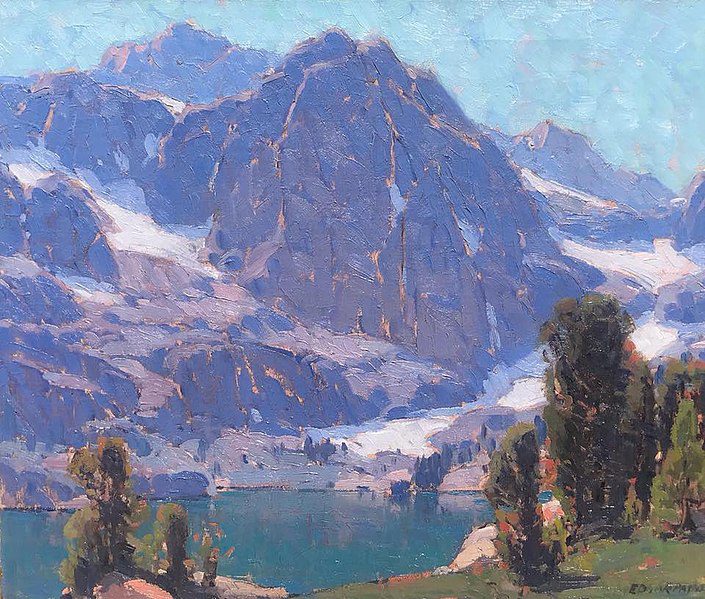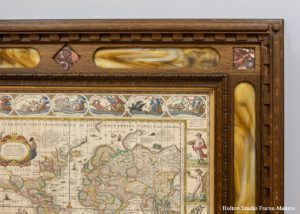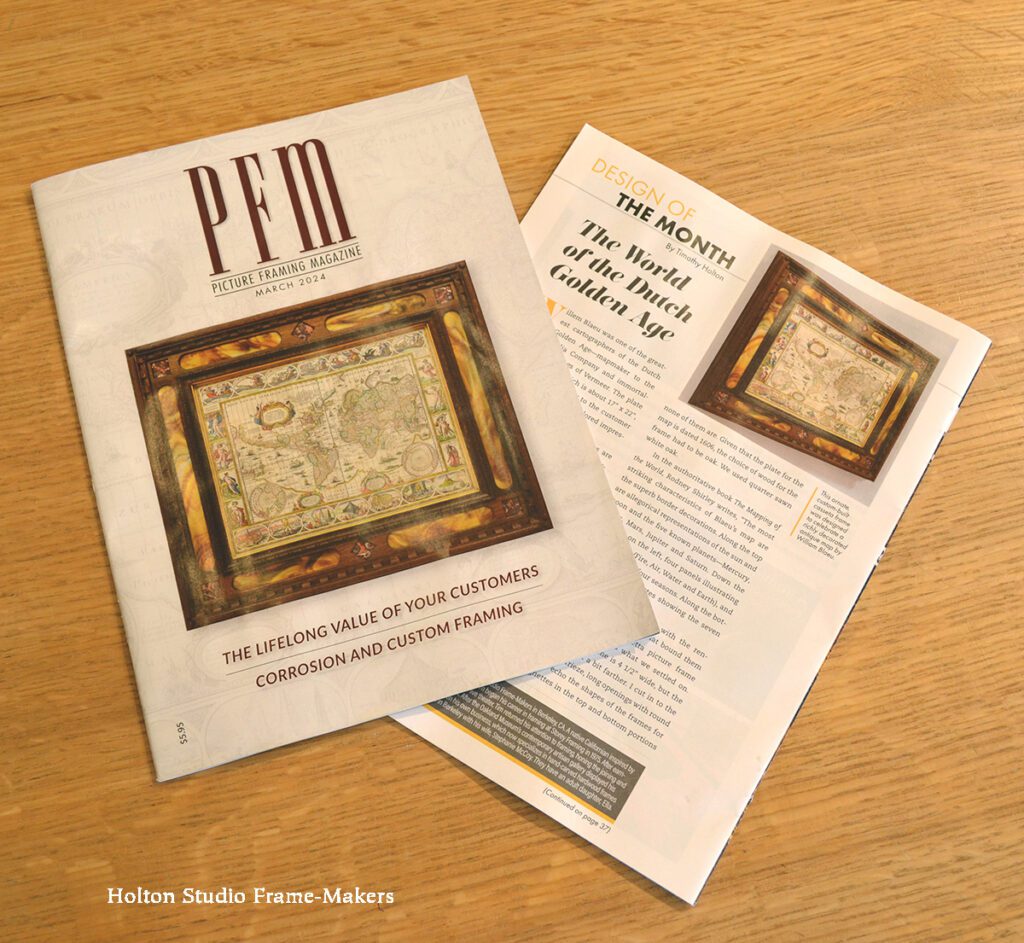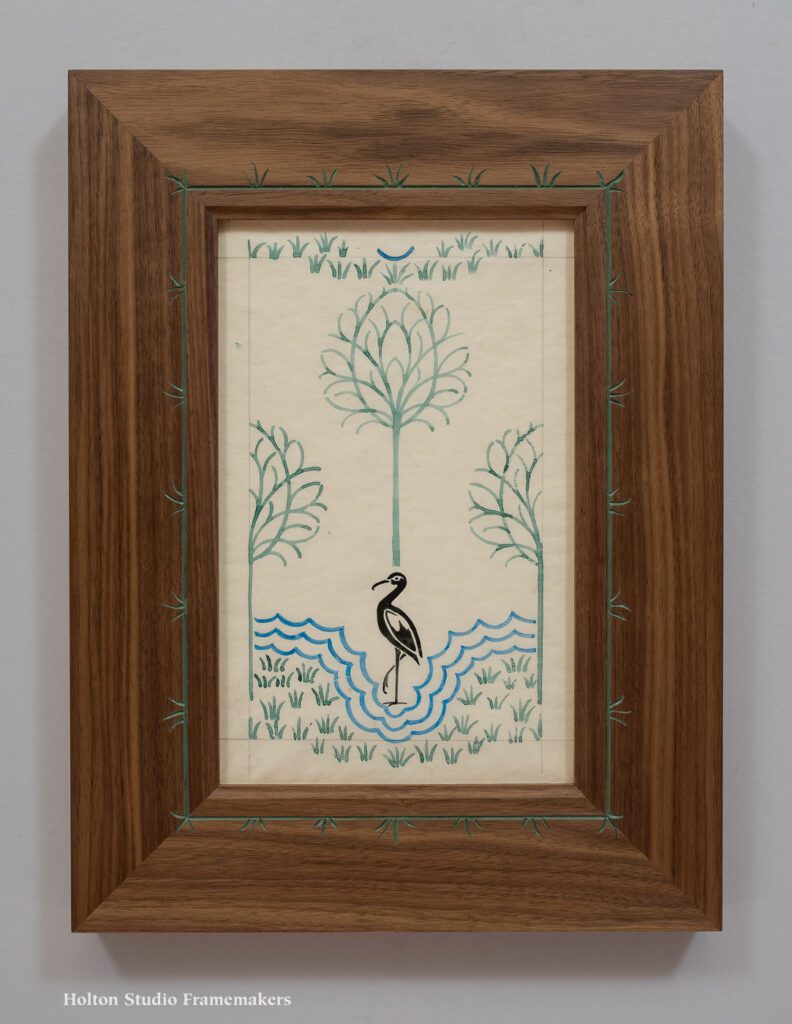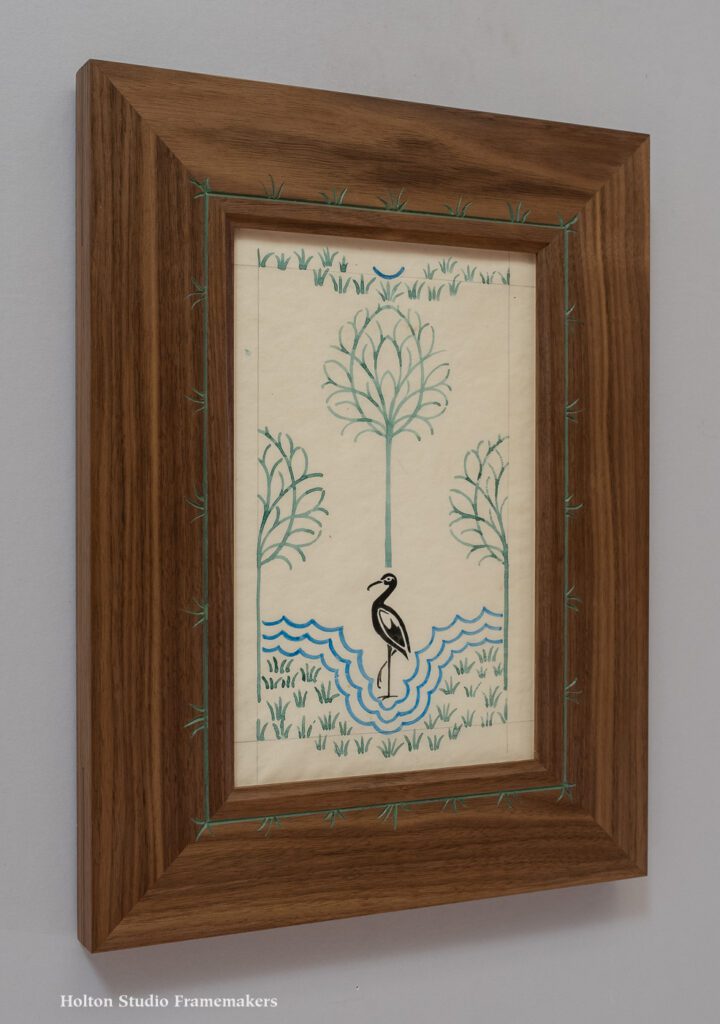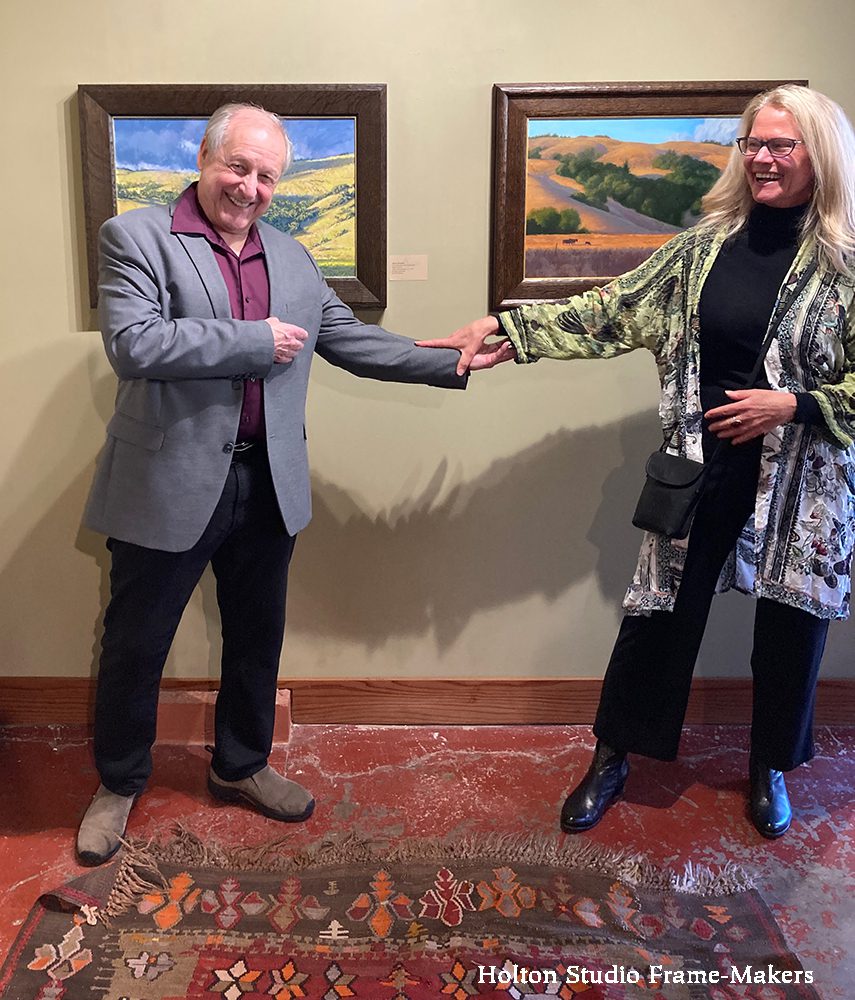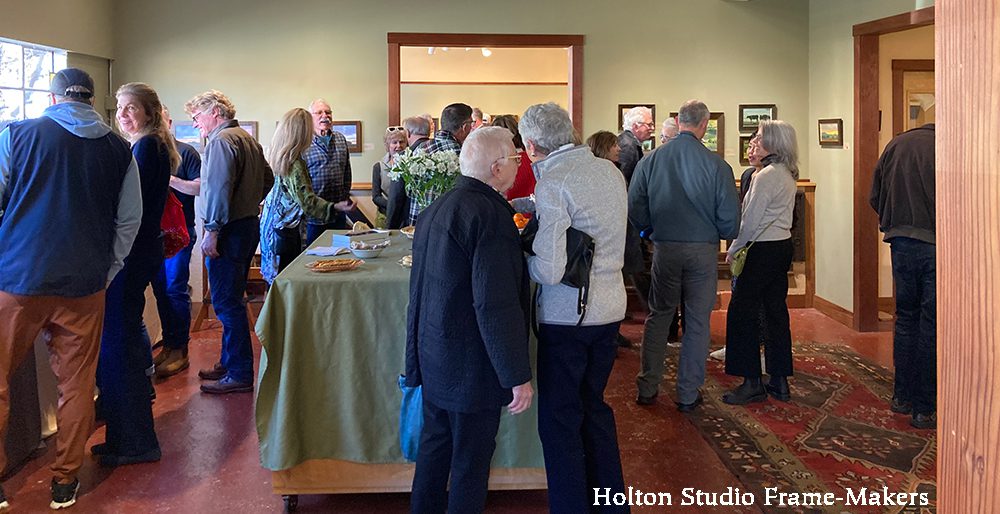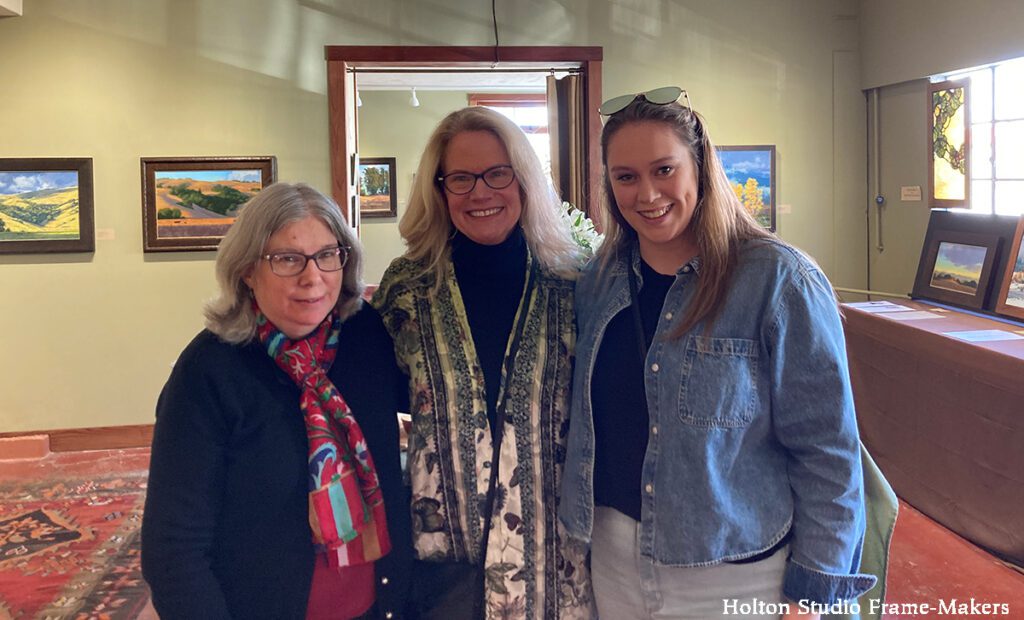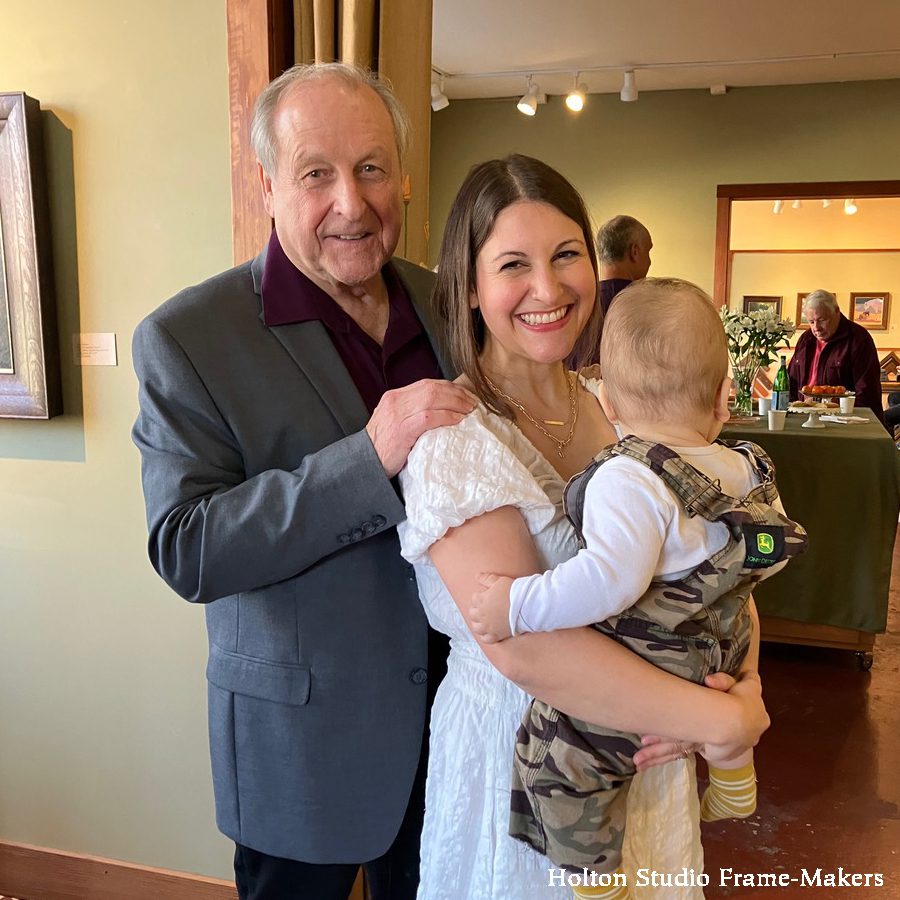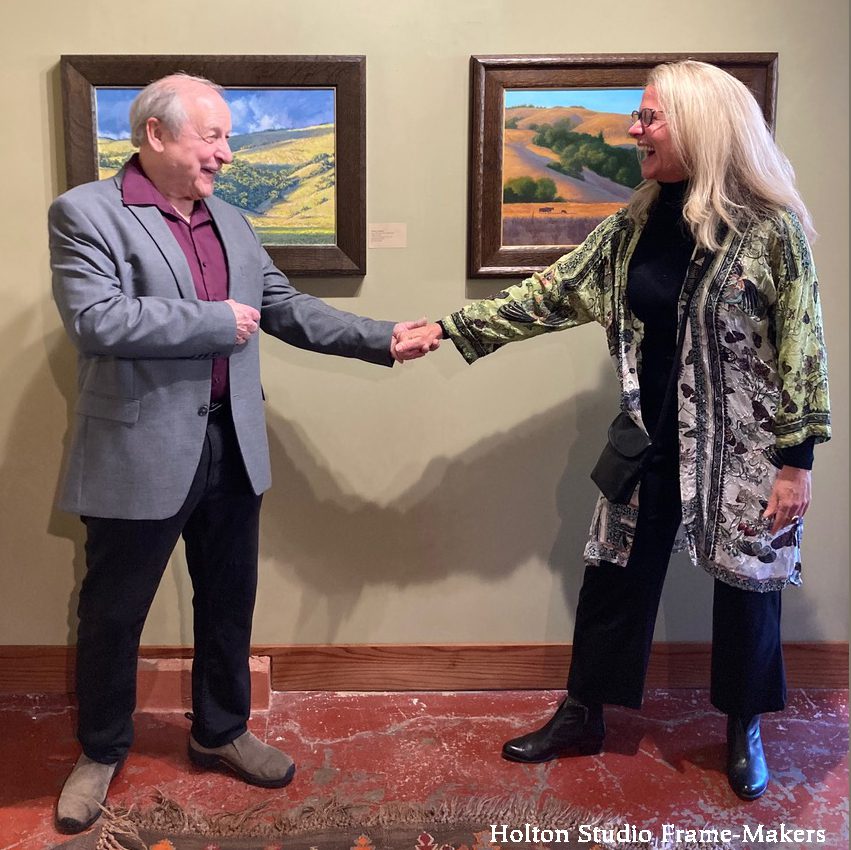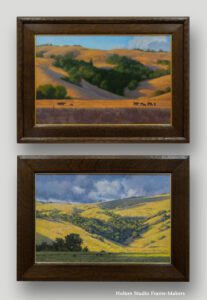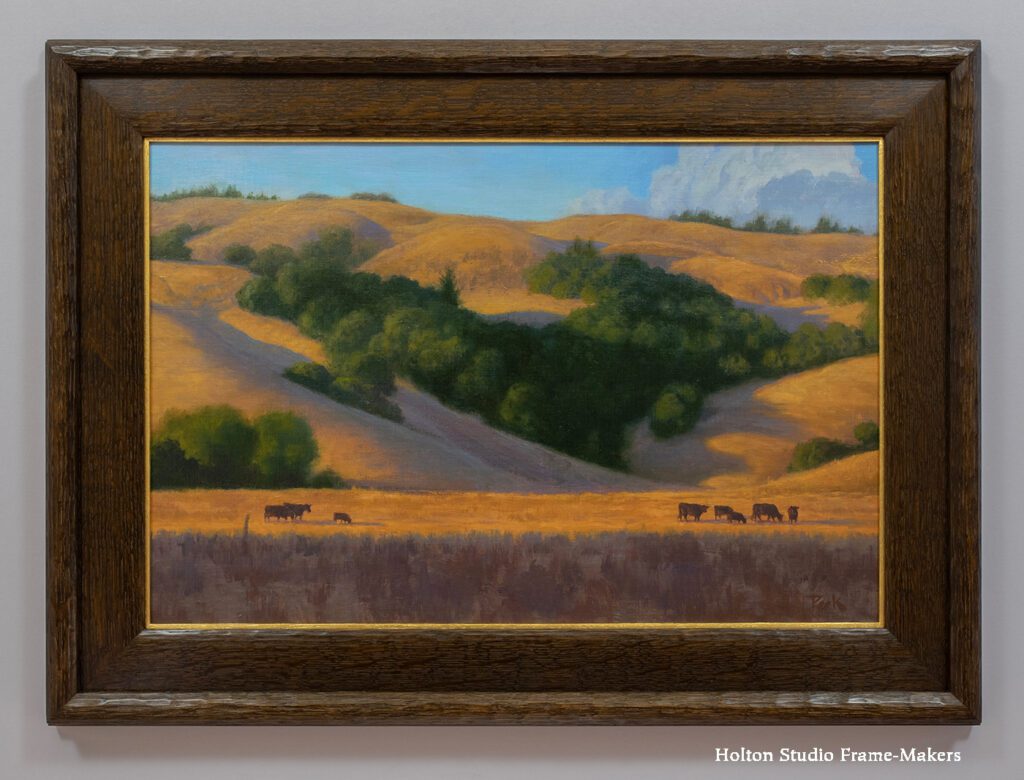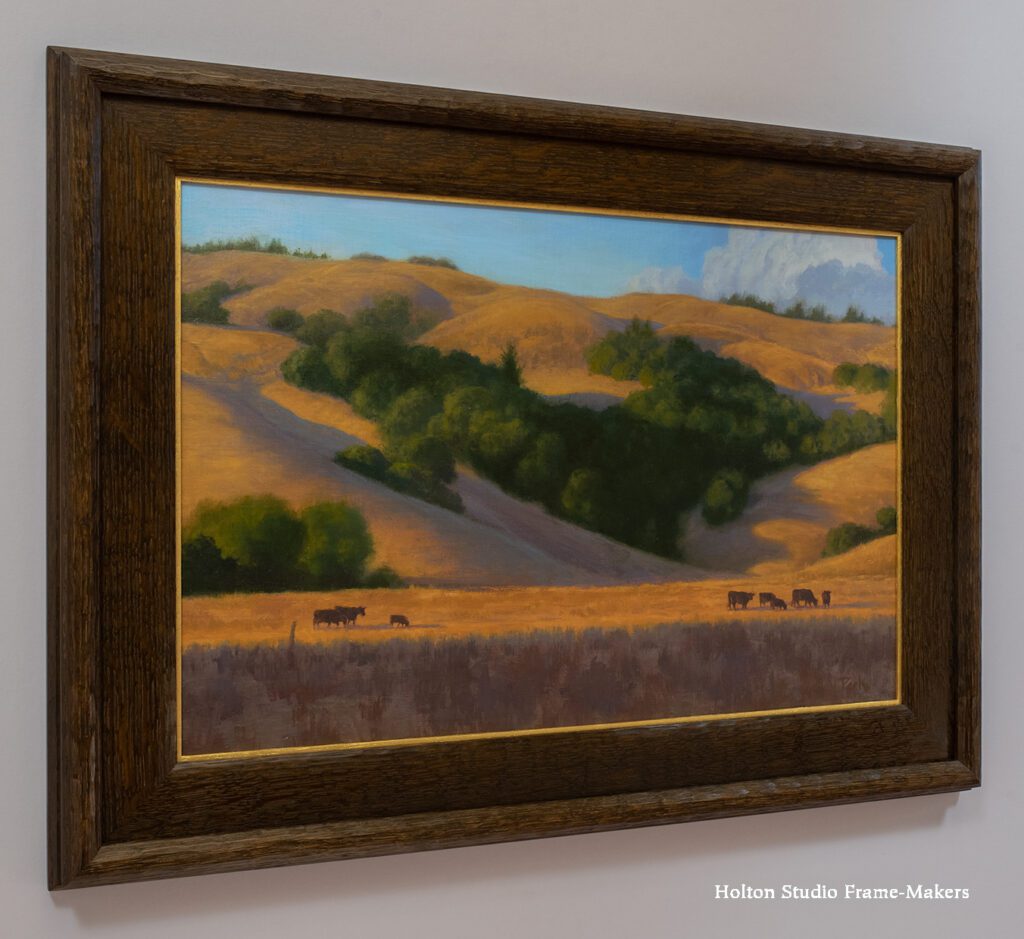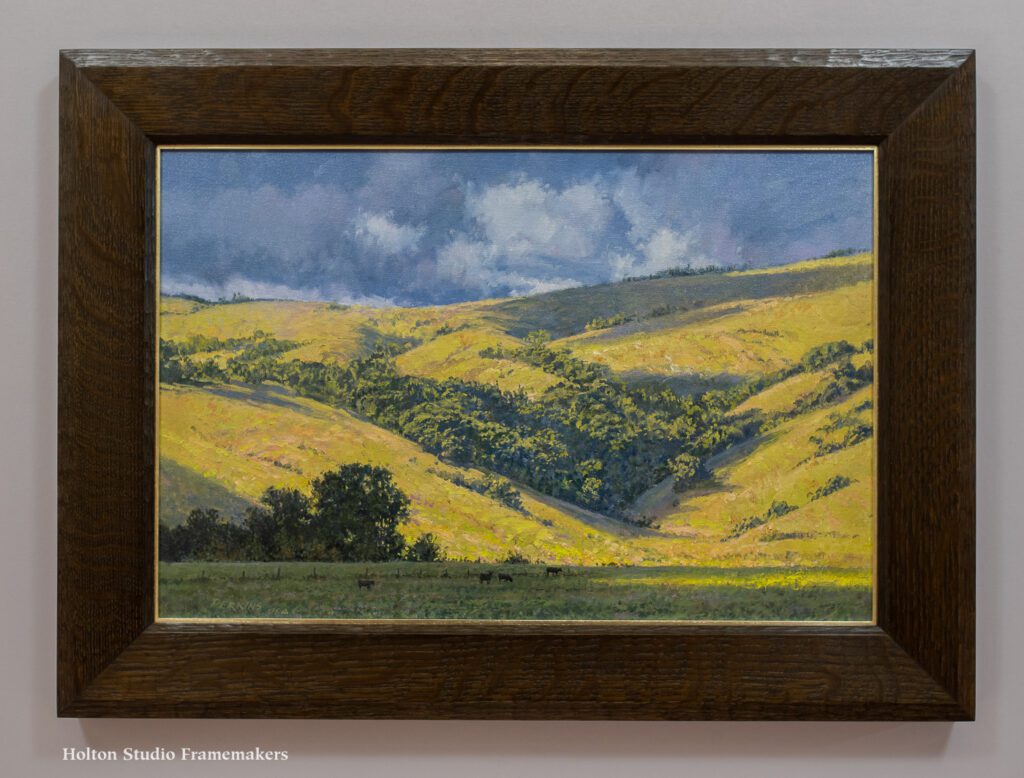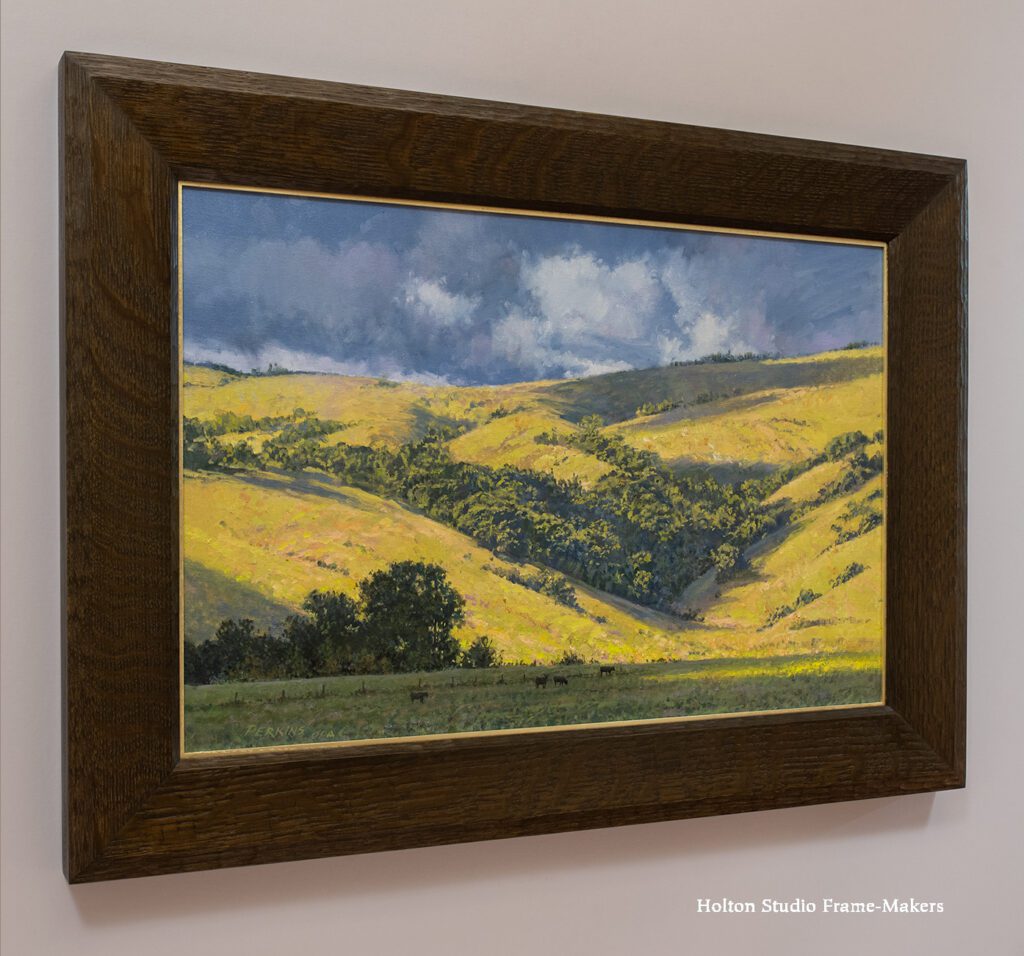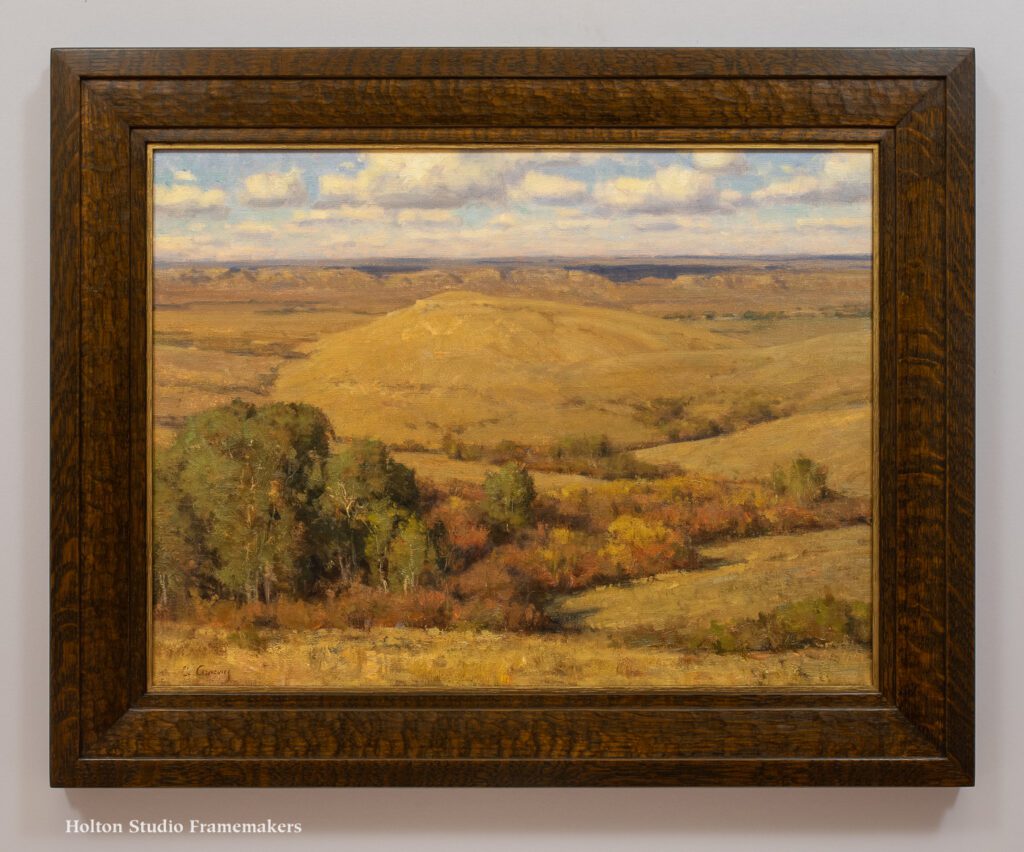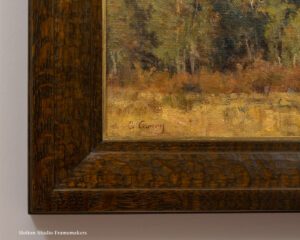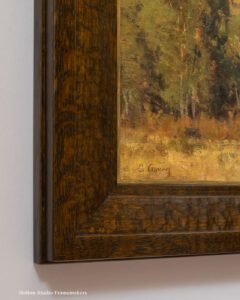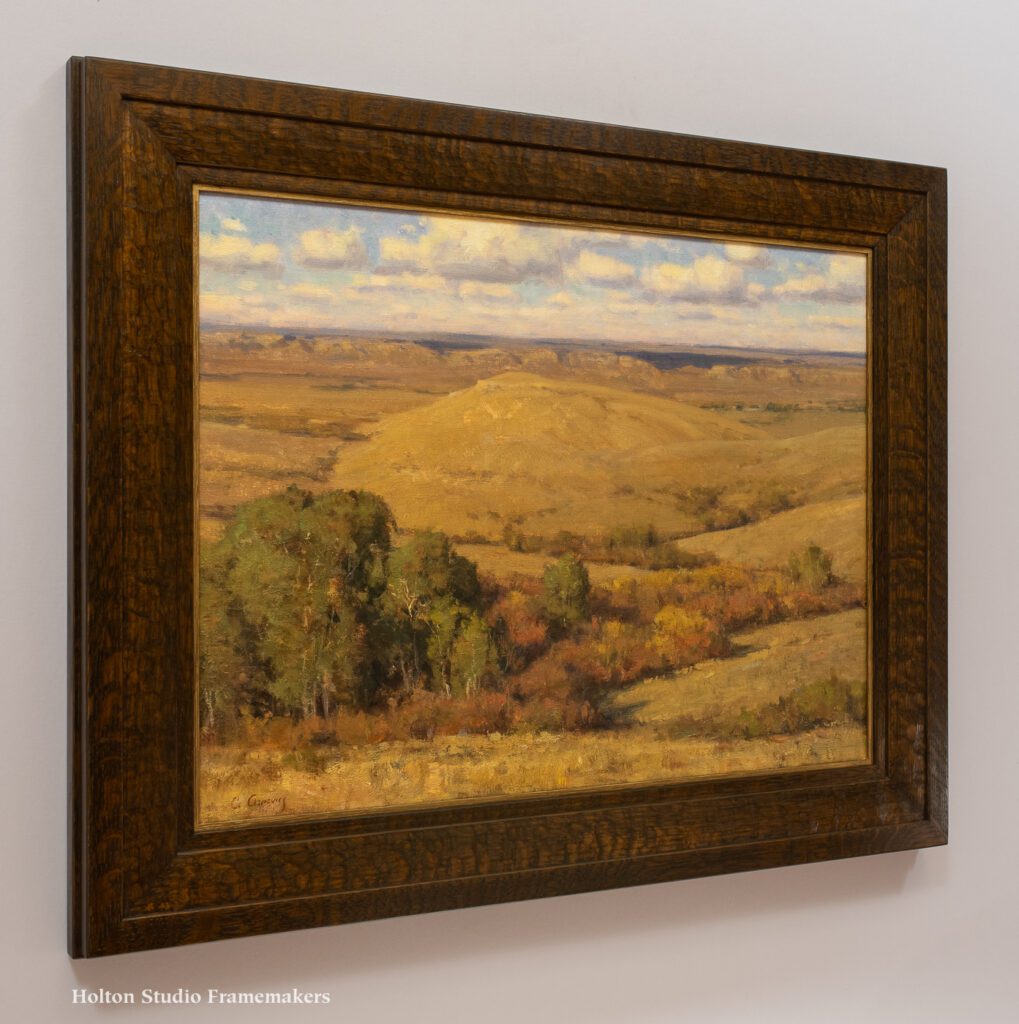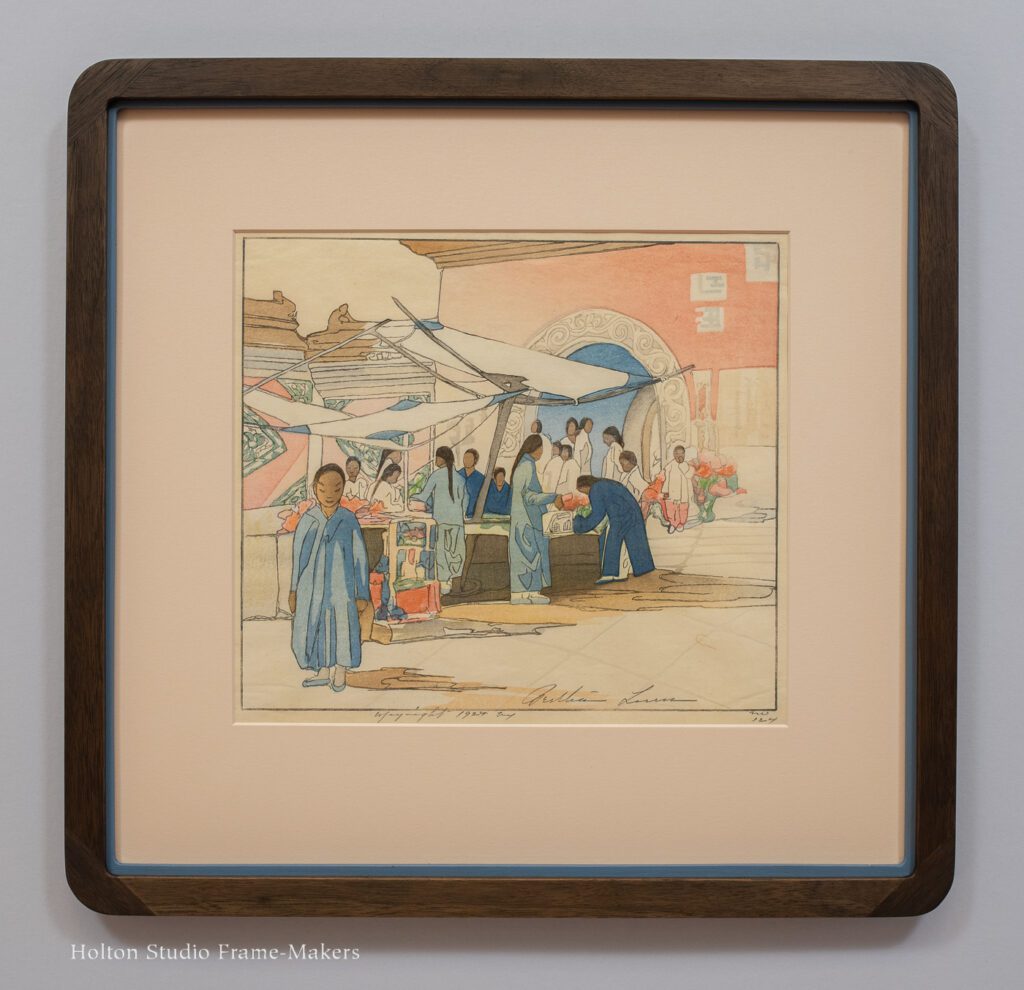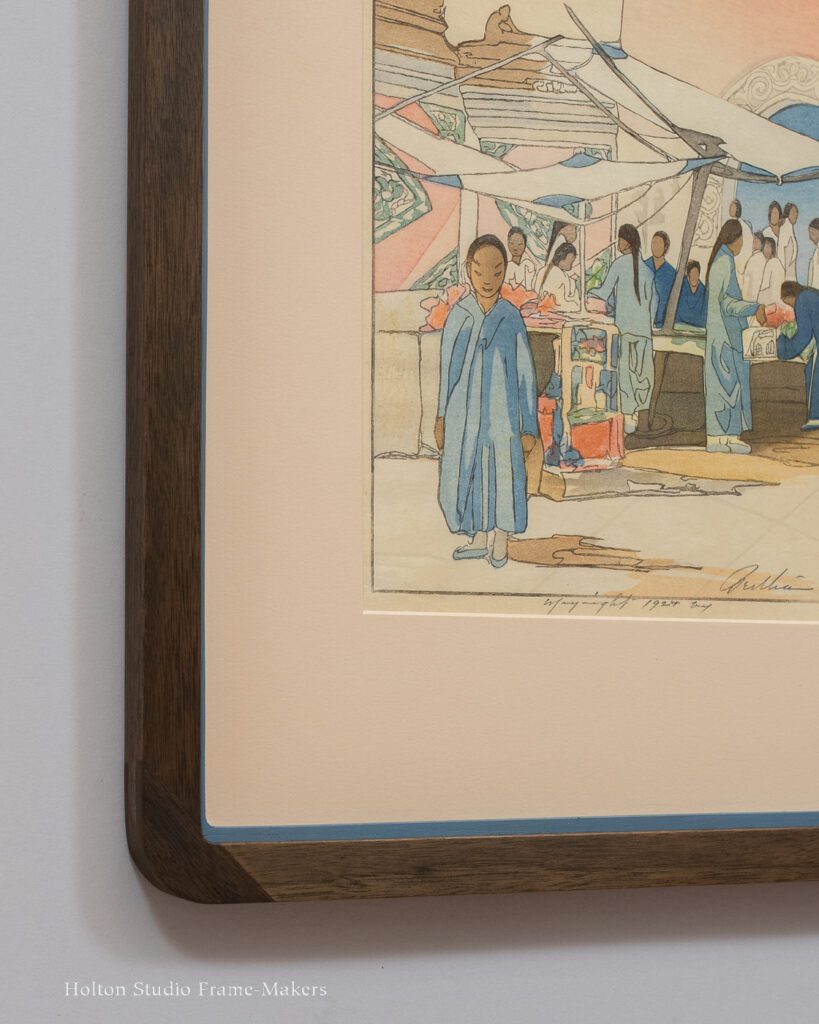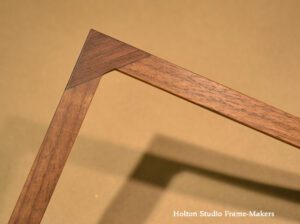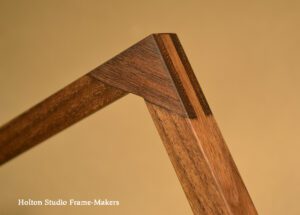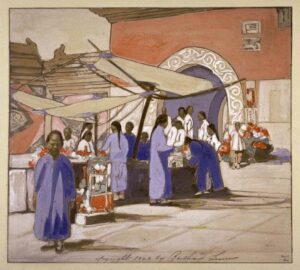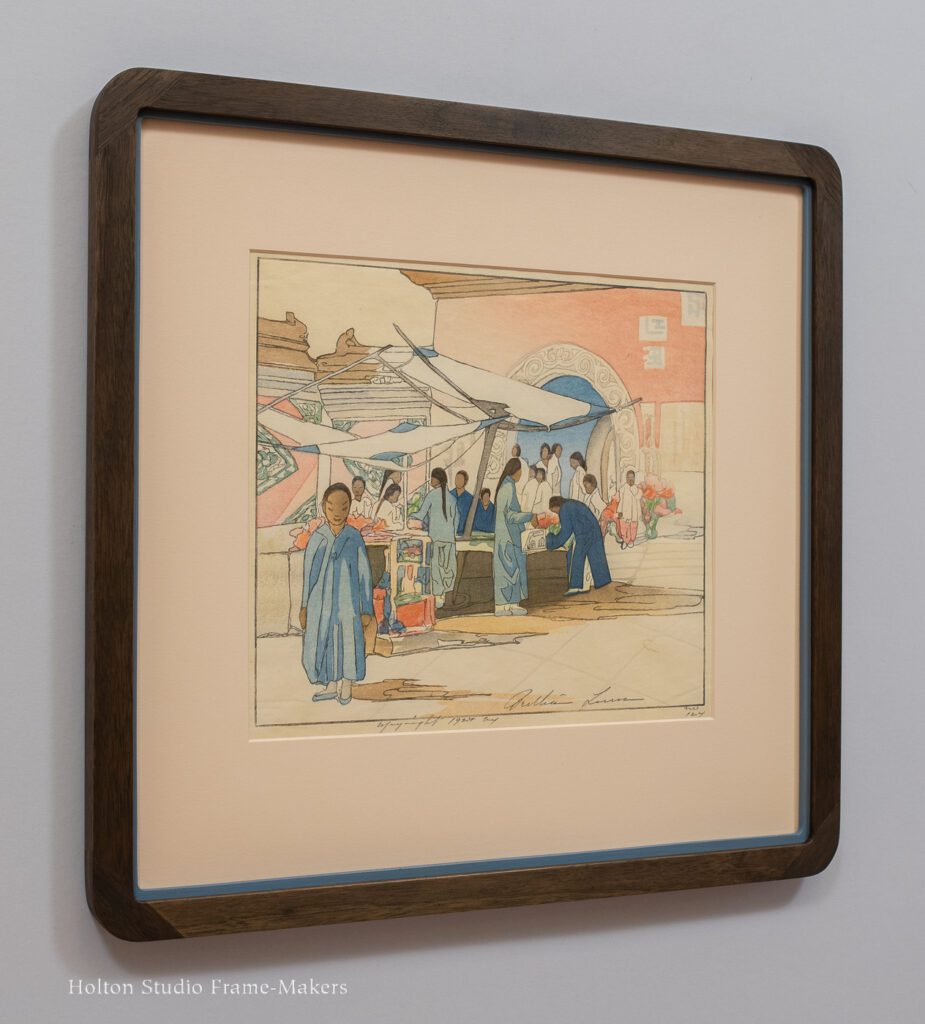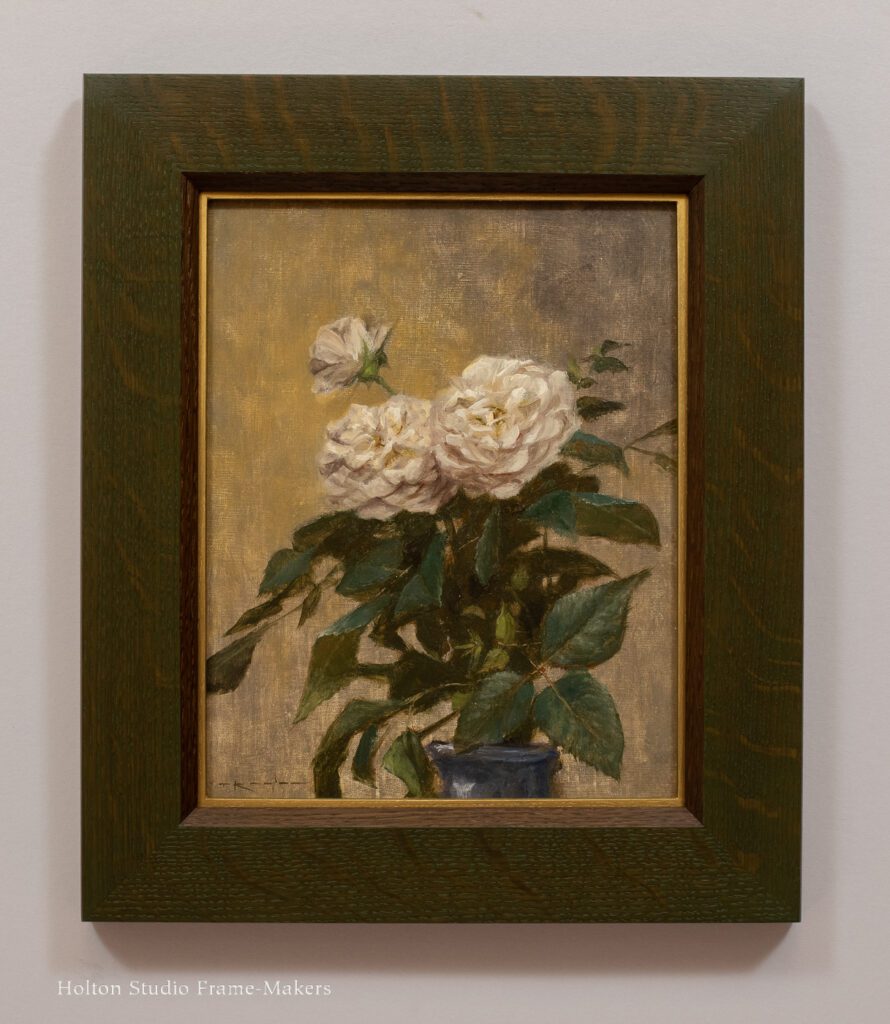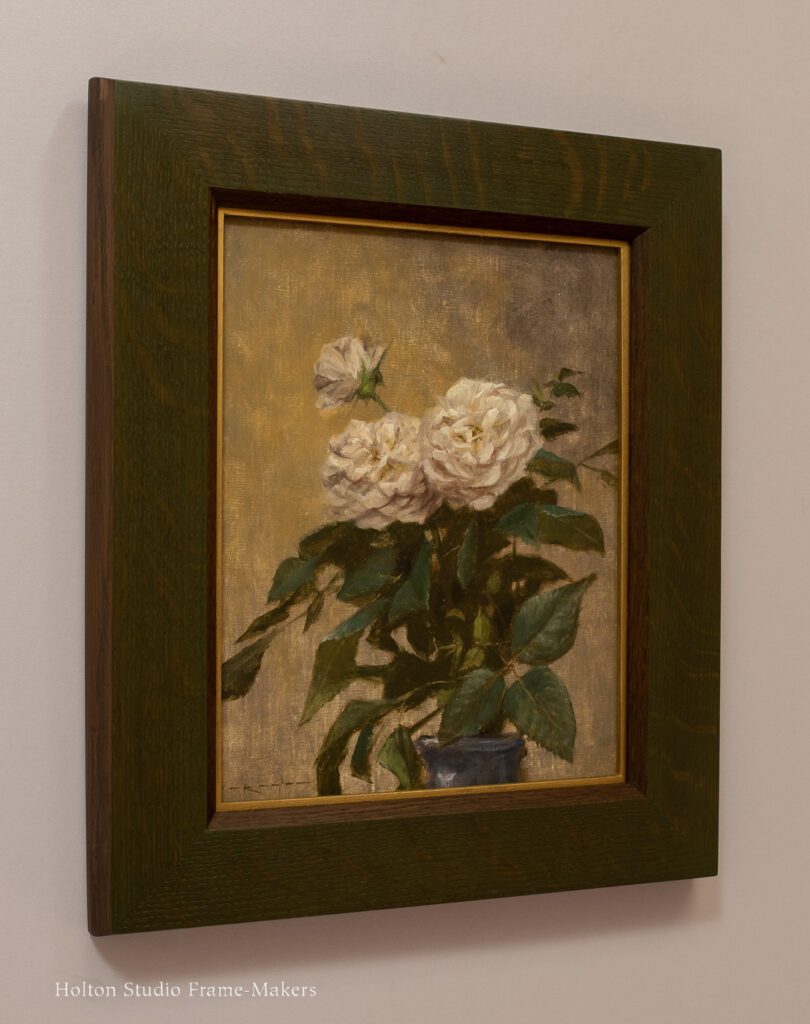Here’s another work by the brilliant William Seltzer Rice (1873-1963)—and, as we arrive at the threshold of spring, a timely one. The 8-3/4″ x 12″ woodblock, dating from about 1920, is titled “The Spring Thaw.”
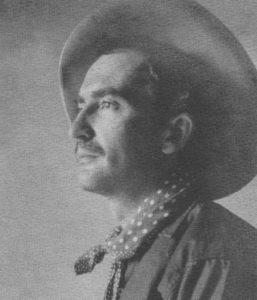
WS Rice, 1906
I made a 2″ wide walnut frame for it, and stained the frame black, matching the key block, and complementing and enhancing the wonderful depiction of sunlight so crucial to the picture’s theme. The frame has a carved recessed panel near the sight edge. I carved the top corners of that panel in a pattern suggestive of the branches in the print. This, then, is along the lines of what I’ve come to call “printable” frames which are made the same way the wooden printing block is made, thus creating a natural harmony with the prints the frames present—a harmony based on a sympathy of craft between the frame maker and the woodblock print maker. (I began exploring this approach in framing another Rice block print, “Lake Merritt,” discussed here.)
I’m pleased with how the carved panel is itself like a stream running around a picture of a stream, its texture echoing the surface of the water in the print. The new frame, responsive and alive to a print that’s over 100 years old, works in the spirit of the season of new life.
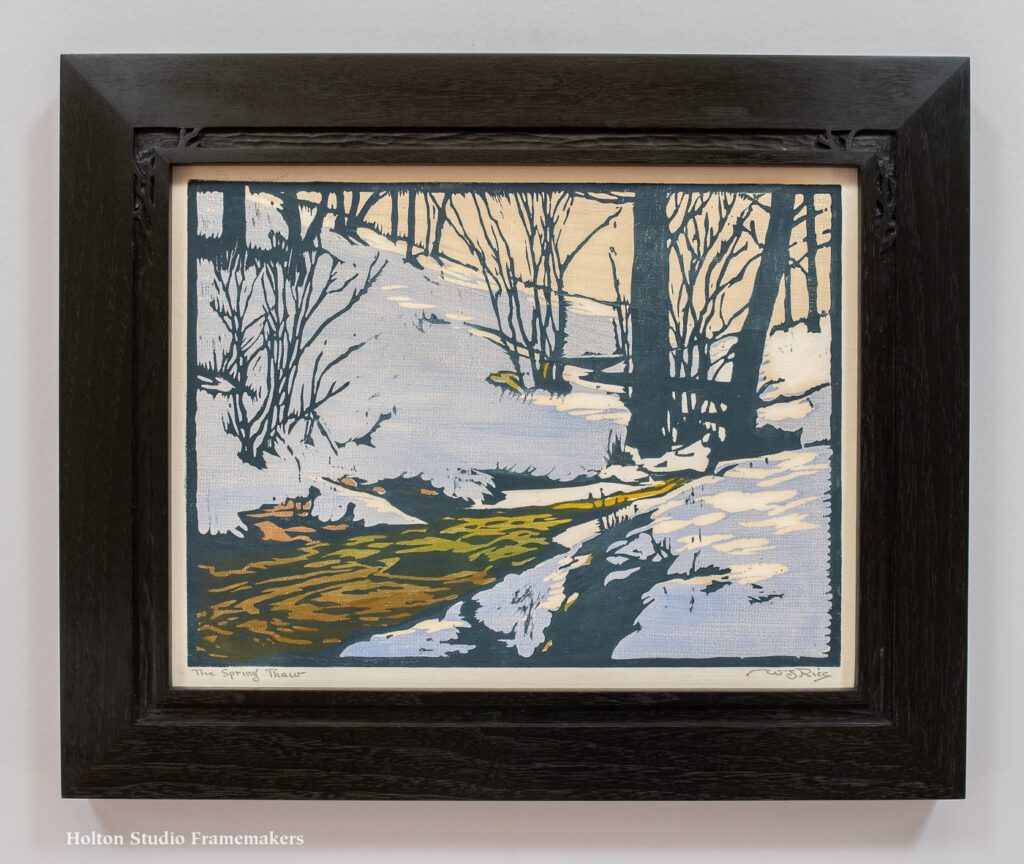
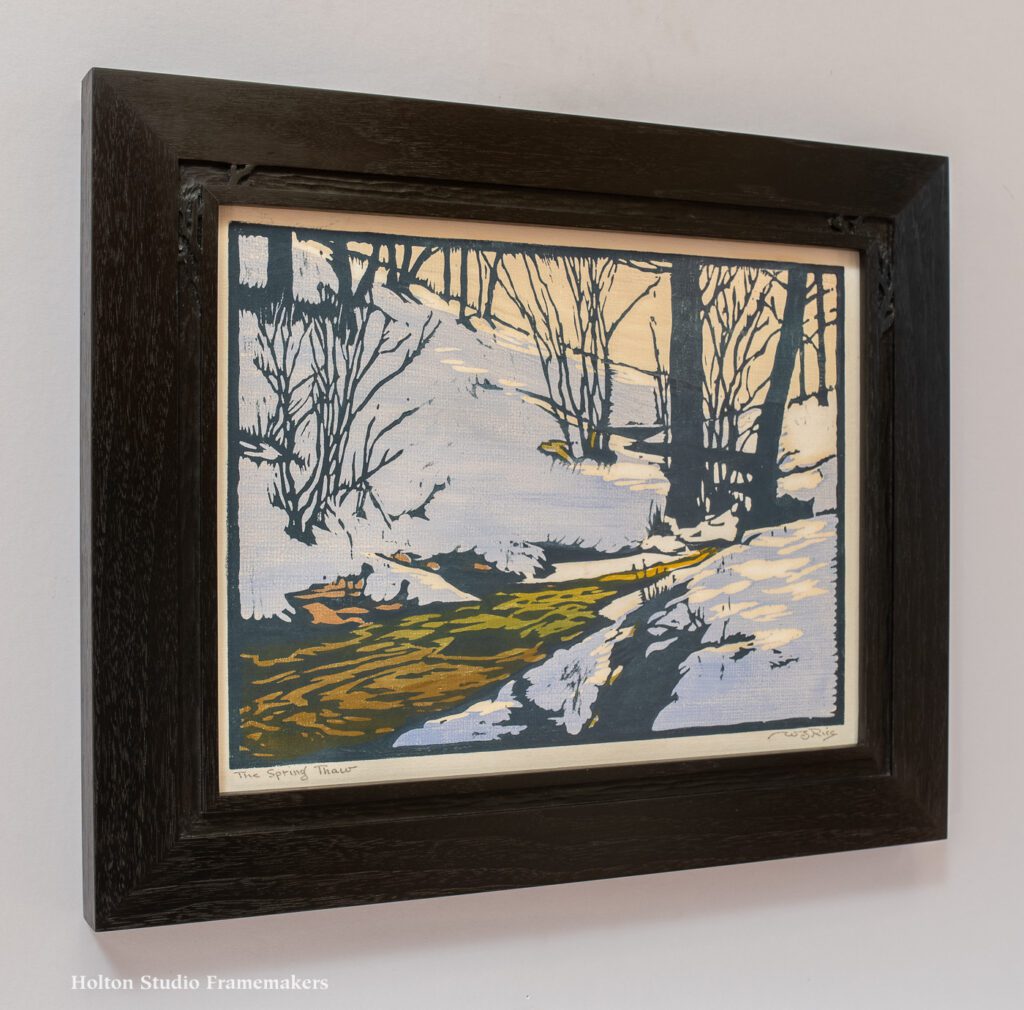 A key challenge—maybe the key challenge—in framing is to connect (not separate) pictures and their architectural settings, beginning with the architectural setting that is the picture frame. The idea is to make a whole, a unity, of two different art forms; to join them.
A key challenge—maybe the key challenge—in framing is to connect (not separate) pictures and their architectural settings, beginning with the architectural setting that is the picture frame. The idea is to make a whole, a unity, of two different art forms; to join them.
One of the keys to unity in any composition is repetition. To be unified with the picture, the frame simply repeats important elements of it. Repetition may not seem very sophisticated or difficult; it’s obviously not very inventive. The framer leaves invention to the pictorial artist. But there is judgment required of the framer in choosing what to repeat, and skill necessary to execute the repeated elements in a different art form.
“The frame,” said Ingres, “is the reward of the artist.” That reward is the proof that the pictorial artist has succeeded in his mission to effect the world by making us see something together, and cherish it and respond to it lovingly as he does. He longs, that is to say, to see his feelings for his subject repeated in us.
We framed William Seltzer Rice’s woodblock “The Spring Thaw” for California Historical Design, which is offering it for purchase, here.
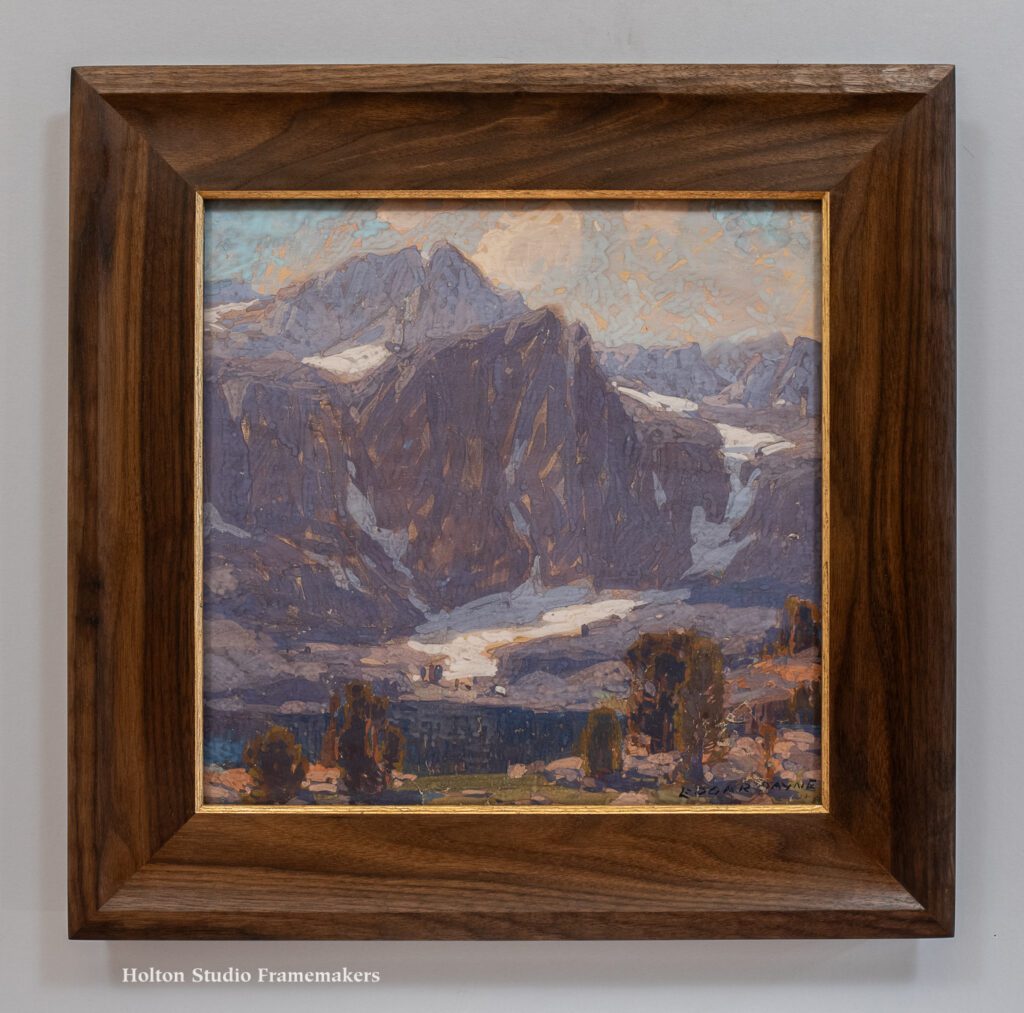
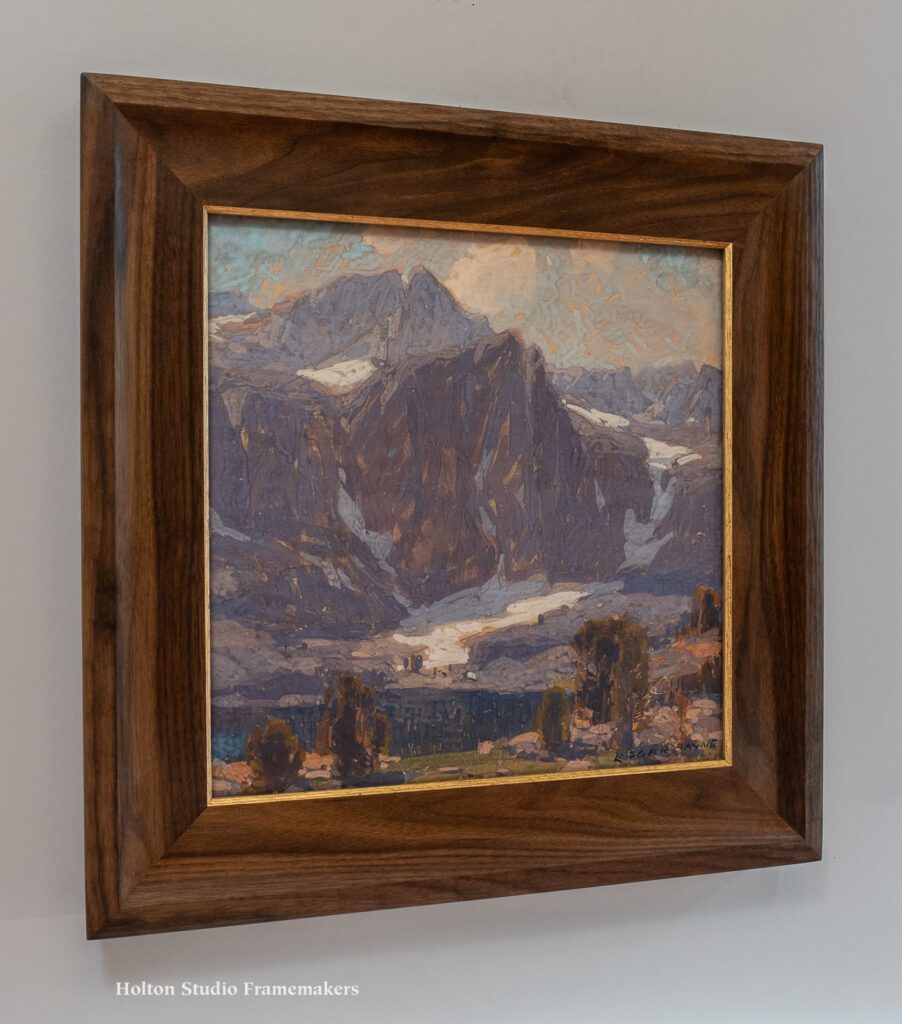 I like this quote from Payne’s 1941 book, The Composition of Outdoor Painting: “A painter needs to study, meditate and experiment and practice interminably in order to produce a painting that would have nobility in its concept, variety, rhythm, repetition, unity, balance and harmony in its composition.” The thriving culture of landscape painting our state enjoys today stands in no small part on that belief and the exemplary body of work it produced.
I like this quote from Payne’s 1941 book, The Composition of Outdoor Painting: “A painter needs to study, meditate and experiment and practice interminably in order to produce a painting that would have nobility in its concept, variety, rhythm, repetition, unity, balance and harmony in its composition.” The thriving culture of landscape painting our state enjoys today stands in no small part on that belief and the exemplary body of work it produced.